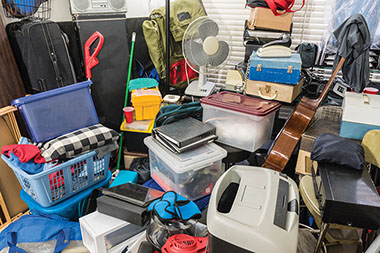WELL-BEING
Overcoming hoarding disorder

Many people have seen TV shows or articles about hoarding disorder. It’s a very real mental disorder that makes it hard for people to throw anything away.
What is hoarding?
When a person has hoarding disorder, things may pile up in their home. This can lead to fire hazards, pests and problems with a job and relationships. Symptoms of hoarding include:
• Not being able to throw anything away
• A strong emotional attachment to everyday household items
• Severe anxiety when trying to throw something away
• Feeling overwhelmed or embarrassed about all the things in their home
• Strong fears about running out of things
• Losing living space because of too many things
• Becoming isolated or losing relationships because of too many items in the house
How is hoarding treated?
The only proven treatment for hoarding disorder is cognitive behavioral therapy. CBT is a type of talk therapy. It helps a person learn how to change their thought patterns and reactions to situations.
Some people with hoarding disorder also get help in support groups. They can connect with others who understand and who are also trying to get better.
Getting help for hoarding disorder
If you think you may have a hoarding disorder, you can seek help from a mental health professional. You can start with your primary care physician.
You can also go to the National Institute of Mental Health (NIMH) resource page at:
www.nimh.nih.gov/health/find-help.
Sources: American Psychiatric Association, Anxiety and Depression Association of America, National Institutes of Health

Download an offline pdf file.
WELL-BEING ARTICLES
<
>
2021 © American Institute for Preventive Medicine - All Rights Reserved. Disclaimer | www.HealthyLife.com







